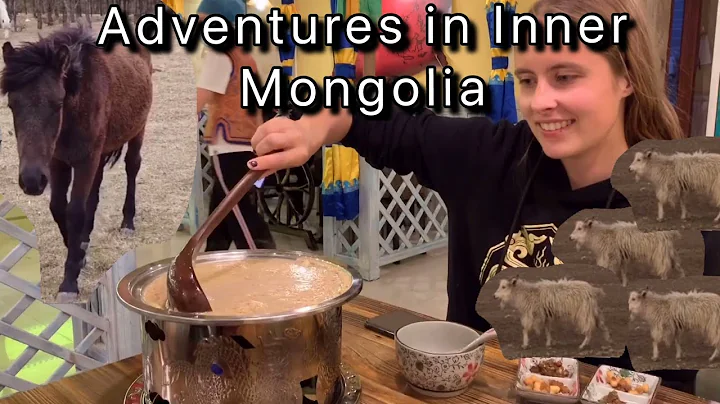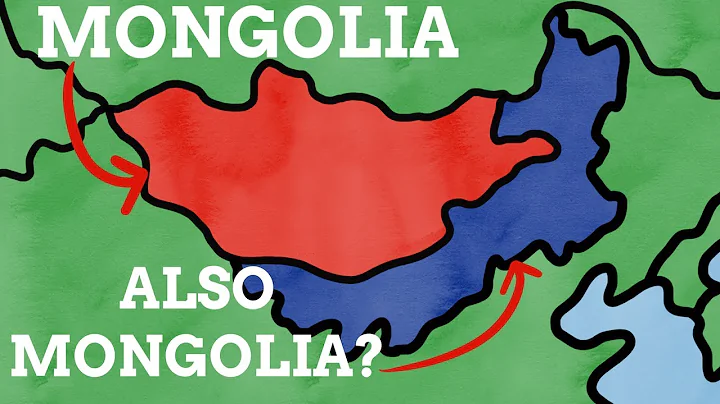Recently, Shanghai's Heytea has become very popular. This Internet celebrity milk tea shop has an average of seven hours of queues per customer to buy. Many people are very curious. What kind of delicious food attracts people's popularity?
However, today, we are more like Kong Yiji and asked a scholarly question: If you love milk tea so much, do you know how many schools of milk tea there are? From Inner Mongolia to Taiwan, China to Southeast Asia, India, and even Great Britain, milk tea as a global drink refers to almost completely different tea drinks due to geographical reasons.
I remember Yang Jiang mentioned in " We Three " that ever since she was pregnant with her daughter, Qian Zhongshu had arranged an English breakfast for them all their lives, which must have included milk tea, toast, butter, jam and boiled vegetables. Just the right amount of eggs. Although Qian Zhongshu's other dishes are not good, milk tea is the most authentic. The milk tea here, what kind of milk tea is it? Today, let’s take a look at several schools of milk tea.
Mongolian milk tea

Let’s start with Inner Mongolia milk tea. Modern local chronicles record: “Mongolians are very fond of tea, and they must use it in large quantities, just like the Han people who eat until they are full. The rules are completely different from those of the Han people. Milk is mixed into the tea. And a small amount of salt is called milk tea. " Mongolian proverb says: "It is better to go without food for a day than to live without tea." It can be seen that milk tea is an indispensable part of the Mongolian diet, and its ingredients appear to be more tea and less. Milk. The Mongolian milk tea recorded in the
text can be traced back to the 13th century AD. With the establishment of the Yuan Dynasty, the Mongolian people who had drank fresh milk or wine since ancient times gradually formed the habit of drinking tea. The "Nong Mulang Ji Yao " compiled and printed by the Yuan Dynasty government specifically introduces how to plant tea trees and make tea, which shows that the government at that time gave strong support to the production and management of tea. After the 13th century, herders boiled the daily fresh milk and tea together to form Mongolian milk tea. This drink with distinctive national characteristics spread widely on the grasslands with the migration of Mongolian tribes. Today, it is still popular in northwest China, Central Asia and parts of Eastern Europe.
The biggest difference between Mongolian milk tea and the milk tea we drink every day is that Mongolian milk tea is salty and is made by boiling tea leaves, fresh milk, butter and salt together. In Mongolian, this tea is called "Sutaiqie". The tea leaves usually use thick-tasting brick tea. Nowadays, many places use Pu'er or black tea instead; sometimes auxiliary foods such as fried rice, beef, and milk skin are added to make it not only a drink, but also a staple food.
Drinking tea and eating meat is a typical life scene of Mongolian herdsmen. There is also a corresponding description in the novel "Wolf Totem": "A fire was lit, and Bilge, the women and children used iron bars and wooden bars to skewer fresh mutton that was still beating slightly, sprinkled with fine salt, and sat down Barbecuing meat next to the fire, drinking tea and eating meat. The tempting aroma of tea, milk, wine and meat drifts into the lake along with the smoke from the campfire, inviting the hunters to come back for a rest and dinner. "
A must-have at every meal. The milk tea is now integrated with the Mongolian national culture. Milk tea is not only for drinking, but also has social functions. "Mongolian Customs" records the custom of the groom offering milk tea to the guests when the Mongolian couple gets married. The milk tea at this time will be darker in color, symbolizing a prosperous and happy marriage. Starting from the day after the wedding, the bride will make milk tea for her family every day, marking her becoming the real hostess of the family.
As Taiwanese scholar Wang Mingke said in his historical anthropology book "The Edge of China - Historical Memory and National Identity": "In cities, there is no big difference between ethnic minorities and Han nationalities: they wear the same clothes and speak the same words. language, and enjoy a common modern culture. However, there are still ethnic differences on certain occasions, which are mainly reflected in national psychological identification, that is, distinguishing ethnic groups from the heart. "To a certain extent, Mongolian milk tea is also unique to the Mongolian people. A cultural symbol.
Taiwanese pearl milk tea

Compared with Mongolian milk tea, Taiwanese pearl milk tea is closer to what we call today and the milk tea that is often drunk on the streets. Taiwanese milk tea is popular among young people, but its specific origin is currently unknown and is quite controversial, because first, "Chun Shui Tang", which operates a bubble black tea shop in Taichung , claims the right to invent it, and another voice thinks it is The "Hanlin Tea House" in Tainan was the first to develop it. Both stores have not yet applied for patents and trademarks, and they have different opinions on their origins.
Chun Shui Tang believes that they have begun to develop milk tea in 1983. At that time, fruits, syrups, candied sweet potatoes, powder balls and other products were blended into milk tea to form pearl milk tea. It was not known in the early days until a Japanese TV show It became widely known after appearing in interviews on the show. Hanlin Tea House said it was inspired by the white powder balls they first saw in Yamuliao market, so the pearls they initially chose were white, and later changed to black.
Taiwanese milk tea shines the most, and what also makes an important contribution to the promotion of milk tea is the use of "automatic sealing machines". Thanks to automatic sealing machines, take-out milk tea has become popular. Milk tea is no longer just a Hong Kong-style tea drink for dining in, but more often a casual drink for office workers in a hurry on the road. The introduction of machines has given new life to the entire milk tea industry.
British milk tea

The British, like the Chinese, also like to drink tea. The average British has various tea breaks from morning to night throughout the day, and the culture of British afternoon tea is world-famous. The Chinese often pursue rich tea categories, but the British only drink black tea, often adding a small amount of milk and sometimes sugar when drinking. The characteristics of more tea and less milk form the basis of British milk tea.
The tradition of British afternoon tea originated in the early 19th century. Duchess Annabeth often asked her maid to prepare toast, butter and tea at four o'clock in the afternoon to satisfy her hunger. She often invites relatives and friends to share the afternoon together. This move gradually became a new trend among the aristocrats and has been passed down to this day, forming the British afternoon tea culture. From the origin story, we can also find that in the tradition of British milk tea, desserts have equal importance to milk tea. Milk tea itself is the protagonist of afternoon tea, but refreshments are also an indispensable golden supporting role.
There are many scenes depicting afternoon tea in British literature. Warm tea accompanies Elizabeth and Mr. Darcy in "Pride and Prejudice" from hostility to secret love. Almost every chapter in "Sons and Lovers" has an afternoon tea event. However, British afternoon tea culture also has obvious class distinctions. Traditionally, nobles would sit on low sofas when enjoying afternoon tea, with refreshments placed on a low coffee table, hence the name Low Tea. In order to replenish their physical strength, ordinary people choose to eat refreshments that are more like dinner on higher dining tables and chairs, so it is called High Tea (高茶).
Hong Kong-style stockings milk tea

Hong Kong-style stockings milk tea inherits the British-style afternoon tea, but it is a century-old colonial culture flowing through it. After the signing of the Treaty of Nanjing in 1842, Hong Kong became a British colony. However, the British milk tea enjoyed by foreigners was too expensive and did not match the spending power and taste of ordinary people. The owner of a small shop in Central, Hong Kong came up with the idea of bringing milk tea to the lower class society, and replaced the exquisite cheesecake in British afternoon tea with filling pineapple buns , rice rolls, and honey thick toast. Four kinds of tea leaves were used to create a richer tea base to replace the bland English milk tea, thus stockings milk tea was born.
Many people are very curious about the name of stockings milk tea. The reason why it is called "silk stockings" is because the milk tea masters invented the process of filtering the black tea residue with cotton gauze in order to blend the tea flavor. Over time, the cotton gauze used for filtering was dyed with black tea, and the color resembled silk stockings, hence the name. This type of small shops catering to the tastes of workers gradually developed into modern Hong Kong-style tea restaurants.
Hong Kong-style tea restaurants have become well-known with the promotion of Hong Kong film and television dramas. Even today, when we see the green and white fine bricks on the floor and the traditional Chinese characters in the restaurant, it is easy to sigh: "Their design is very good TVB!" Sometimes! It's interesting to think about it. Hong Kong, this former colonial city, no matter how popular it is today, the details of the city's memory have actually been melted into cups of stocking milk tea and pineapple buns.
Hong Kong writer Dong Qizhang once wrote a novel "Tiangong Kaiwu - Lifelike", which tells the story of personal growth and family changes, and the century-old city life of Hong Kong also travels through it. Reading this book, we seem to be able to see the endless history of the British Empire. A traditional picture of contemporary Hong Kong life. The writer wrote: "I proposed to go for a walk on the hill first and look at the sea, but because Ruzhen was afraid of the sun, we ended up hiding in an air-conditioned tea restaurant for an afternoon."





















